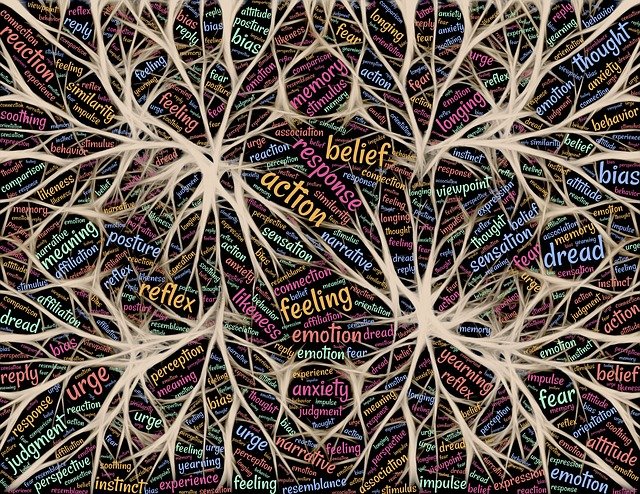Attribution theory in psychology is the process of making inferences and judgments regarding our experiences in daily life.
These often occur subconsciously, and we typically do not have awareness due to underlying processes and biases.
What Is Attribution Theory in Psychology?
Attribution theory was first put forward by Austrian psychologist Fritz Heider, which he explained in his book The Psychology of Interpersonal Relations, published in 1958.
The book “The Psychology of Interpersonal Relations” suggests that people observe others, analyze their behavior, and develop common-sense explanations for their actions.
Since then, it has been further expanded upon by many American social psychologists, noticeably Harold Kelly and Bernard Weiner.
Many psychologists widely recognize it as a motivational theory today and are used to explain social experiences and judge a specific behavior based on human motivation. It attributes the causes of events in a person’s life to internal or external behavioral factors.
What is the purpose of making attributions to actions and behavior? Once a behavior is identified and attributed, it offers cognitive control and creates order and predictability as it becomes easier to make inferences regarding behavior in certain environmental circumstances.

Dispositional and Situational Factors:
What happens when you fail a test? Do you internalize your guilt and think about where you went wrong?
Did you prepare well enough?
Were you able to understand the questions?
Or do you blame the teacher? Did she prepare the most challenging paper? Did she grade you unfairly?
Dispositional Attribution or Internal Attribution looks into internal factors like a person’s attributes, abilities, skills, mood, attitudes, personality, and characteristics, commonly known as dispositional attribution theory.
For example, a person who is good at a sport will attribute it to their athletic talent.
Situational Attribution or External Attribution relies on being judged by outside factors and situations- things beyond our control, such as luck or interference from an outside source, commonly referred to as situational Attribution.
For example, if a person loses in a sport they are arguably good at, they may blame it on bad luck or extenuating circumstances in their personal life.
Types of Attribution:
Why do we choose to make different attributions in different situations?
Cognitive bias plays a significant role in determining why we attribute internal factors in some cases while opting for external ones in others. The types of Attribution further explain the phenomenon:
Interpersonal Attribution is where you may attempt to portray yourself in the most favorable light by using stable internal factors and explaining the reasons behind your actions.
For instance, if a husband and wife fight, the wife will tell her friends that the husband had instigated the fight and she did everything to avoid it. This way, she portrays herself as the peacemaker.
Predictive Attribution is where the behavior is attributed to allowing people to assess future behavior.
For example, if you do not perform well in sports at school, you are likely to attribute it to the fact that you did not have breakfast and thus, lacked energy.
Explanatory Attribution struggles to attain the best understanding of the world around. The explanatory styles can be optimistic, which may explain adverse events due to external factors not under our control, and favorable circumstances due to internal and stable factors.
For example, if your tire is punctured while driving, you might associate it with a sharp object on the road rather than your driving style. Hence, you are blaming external factors rather than explaining your behaviors.
Attribution Theories
Correspondent Inference Theory:
The correspondent inference theory deals with expected behavior patterns by observing how a person’s actions are related to their motives. Inferences are made by the choices, anticipated behavior, and the effects of the behavior.
The correspondent inference theory assumes that if someone behaves in a socially desirable way, we do not tend to infer much about them as a person.
For instance, if you ask your classmate for a pencil and she gives one to you, you are not likely to pay her much attention.
However, if a classmate is depressed because her cat died, people might infer she is a somewhat sad person, even though they know the situation is upsetting.
Heider’s Common Sense Theory:
The Common sense psychology theory proclaims that people follow their model for understanding behavior. People observe others’ behavior in a particular environment, make their deductions, and then assume what makes the most sense to them.
These are further expanded into internal Attribution and external attributions, which become the basis of predicting behavior.
For example, a friend seems unusually quiet and upset. Since there was a recent test in which he failed, you may assume that that’s what made him upset. Your friend had also been sick recently, contributing to an external factor for their failure.
Kelley’s Covariation Model:
When we talk about Attribution Theory in social psychology, Harold Kelley’s Covariation theory is arguably one of the most popular. This model explains that behavior can be attributed to different variables.
Consider the given situation; During lunch with friends, they order something more expensive than you usually would.
What are the factors that will discern your behavior?
Consensus: a behavioral decision made depending on the people around and what decisions they are making. If you order the same as your friends, the consensus is high, but if you order something more budget-friendly, the consensus is low.
Distinctiveness: if the same behavior occurs in other similar situations, distinctiveness is low. If behavior differs in similar occurrences, distinctiveness is high. Do you order the same way every time you go to a different restaurant, or will it differ?
Consistency: Consistency is high if the same behavior occurs in the same situations. If behavior differs in the same situations, consistency is low. Do you order the same way in the same restaurant, or will you opt to order differently next time?
Biases And Errors: Attribution in social psychology can be affected and distorted by specific errors and biases.
Actor Observer Bias: This is when people tend to perceive themselves in a more favorable light than they would others in the same situation.
For example, if you score well on an assignment, you will likely compliment your skills and other internal attributes to your achievement. But if a classmate achieves a good grade, you might attribute it to external factors such as luck or cheating.
This is where you might fall into an Actor-Observer Bias.
The Fundamental Attribution Error
In individualistic cultures, a person’s behavior tends to be attributed to internal factors like personality traits rather than external Attribution.
Fundamental Attribution Error refers to the tendency to over-emphasize the role of personality traits in shaping behaviors.
The fundamental attribution error describes why people often blame others for things they usually have no control over. Social psychologists often use the term blaming the victim to describe a phenomenon in which people often blame the innocent victims of crimes for their misfortune.
Self-Serving Bias: As the name suggests, this kind of bias tends to be used when it serves a personal agenda. We often credit our achievements to our skills, hard work, and effort, while failures are often attributed to outside factors beyond our control, commonly referred to as self-serving bias.
Perceptual Shortcuts: are the shortcuts we take to judge others. They let us make predictions about others quickly but are not always accurate. There are four types of perceptual shortcuts;
- Selectivity
- Assumed similarity
- Stereotyping
- The halo effect.
Weiner’s Model Of Achievement Attributions
When Heider developed his Attribution theory, Bernard Weiner covered the aspects that Heider’s theory did not. He developed a theoretical framework that has become a significant research paradigm of social psychology.
Weiner’s model of Attribution of a person’s behavior states that personal and environmental factors affect young individuals. Personal factors may include past experiences or learning outcomes, while external attributions include home or school environment. These are both variables affect how attributions are made.
Weiner posited a three-dimensional model of the attribution theory, which proposed that individuals have initial affective reactions to the potential consequences of the intrinsic or extrinsic motives of the actor, which in turn impact future behavior. responses
Causal Attributions
Weiner (1980) states: “Causal attributions determine affective reactions to success and failure. He believes that an individual’s causal attributions of achievement behaviors affect subsequent achievement behaviors and motivation, future achievement expectancies, persistence at similar tasks, and pride or shame felt following success or failure.
This three-dimensional model consists of the three casual dimensions:
Locus of Control
This is divided into two components, which refer to how people may infer their outcome due to internal attributions under your control, such as ability or effort, or external factors such as weather, traffic, another person’s behavior, etc.
We can further expand upon this in outcomes and associated emotions. When we make internal attributions to the outcomes depending on the premise, a successful outcome will be internally attributed to pride, competence, satisfaction, and confidence, while a failed outcome to shame, guilt, lack of confidence, low self-esteem, etc.
In the case of external forces, it is common to attribute gratitude, luck, and appreciation to successful outcomes. While a failed outcome refers to anger, ingratitude, disappointment, astonishment, etc.
For example, if a student fails to submit an assignment on time, do they blame their behavior like their lack of responsibility or efficiency (internal) or do they blame outside factors such as an emergency at home or lack of resources to complete the assignment (external).
Stability and Controllability
When we talk about Attribution Theory in social psychology, it tries to explain if we attribute particular behavior to certain factors and does it create stability in the person’s behavior. What is the effect of repeated behavior during a period; does it stay consistent, or does it vary? Does it affect the amount of control a person has over their own behavior?
Stability- this dimension ponders whether the premise of the event stays the same and stable or varies and is unstable across different situations and environments. Using the above example, if the student blames his incompetency for submitting on time, it is stable. If he blames it on an emergency at home, in that case, it is unstable as the factor is temporary.
Stability influences individuals’ expectancy about their future; control is related to individuals’ persistence on a mission; causality impacts the emotional responses to the outcome of the task.
Controllability– this dimension touches on whether the individual has any control over the cause of the situation. In the aforementioned example, does the student believe he could have submitted the assignment on time? If he had been more responsible, which would make the cause controllable?
But if he thinks couldn’t avoid the emergency at home in favor of completing his task, then it is uncontrollable as an external cause.
When an individual, mainly a student, chooses the type of Attribution, their decision directly affects their future behavior patterns.
CBT and Attribution Theory in Psychology

Many therapies today use attribution theory in social psychology as a premise for correcting cognitive errors.
In cognitive-behavioral therapy, or CBT, attribution retraining aims to correct maladaptive attributional styles. CBT recognizes that individuals often suffer from automatic negative thoughts and aims to identify and challenge those cognitive errors.
Moreover, research suggests attributional styles are a risk factor for depression. I.e., These individuals have a depressogenic attributional style. This is the tendency to associate adverse life events with internal, stable, and global factors.
Therefore, attribution retraining works by challenging clients’ explanations for problems and life events. In a similar way, they perceive themselves and their life events and clients’ emotions and behavior.
Application of Attribution Retraining in an Academic Setting
Students are more likely to require attribution retraining to influence their perception of success and failure.
In social psychology, we can factor in four main elements; ability, effort, luck, and difficulty level. As a student, you might feel you’re a great candidate for running for Class President. Here you are attributing your leadership skills. An athlete might believe that being in the starting line-up for football could be due to just another unlucky tryout.
Or what about when that math test was beyond difficult?
However, what will you do when things are not under your control?
In social psychology, difficulty level and luck are not controllable variables. Whereas people can upskill their abilities by learning new skills. Here, the opportunity arrives for a teacher to retrain the students’ Attribution towards ‘effort’ as the driving force to success or failure. Students who believe in the effort-based approach are more likely to have confidence in themselves and feel empowered. This leads to a more positive outcome and, eventually, to success.
As Henry Ford said,
“Whether you think you can, or you think you can’t – you’re probably right!”
– Henry Ford
Closing Notes
Attribution theory in psychology is not only what the textbook pages tell us, but it is something we experience daily.
How many examples can you give from your lives that explain your behavior and how you feel resulting from it?
Most importantly, your perception of self significantly affects you, which is a significant factor for mental well-being.

